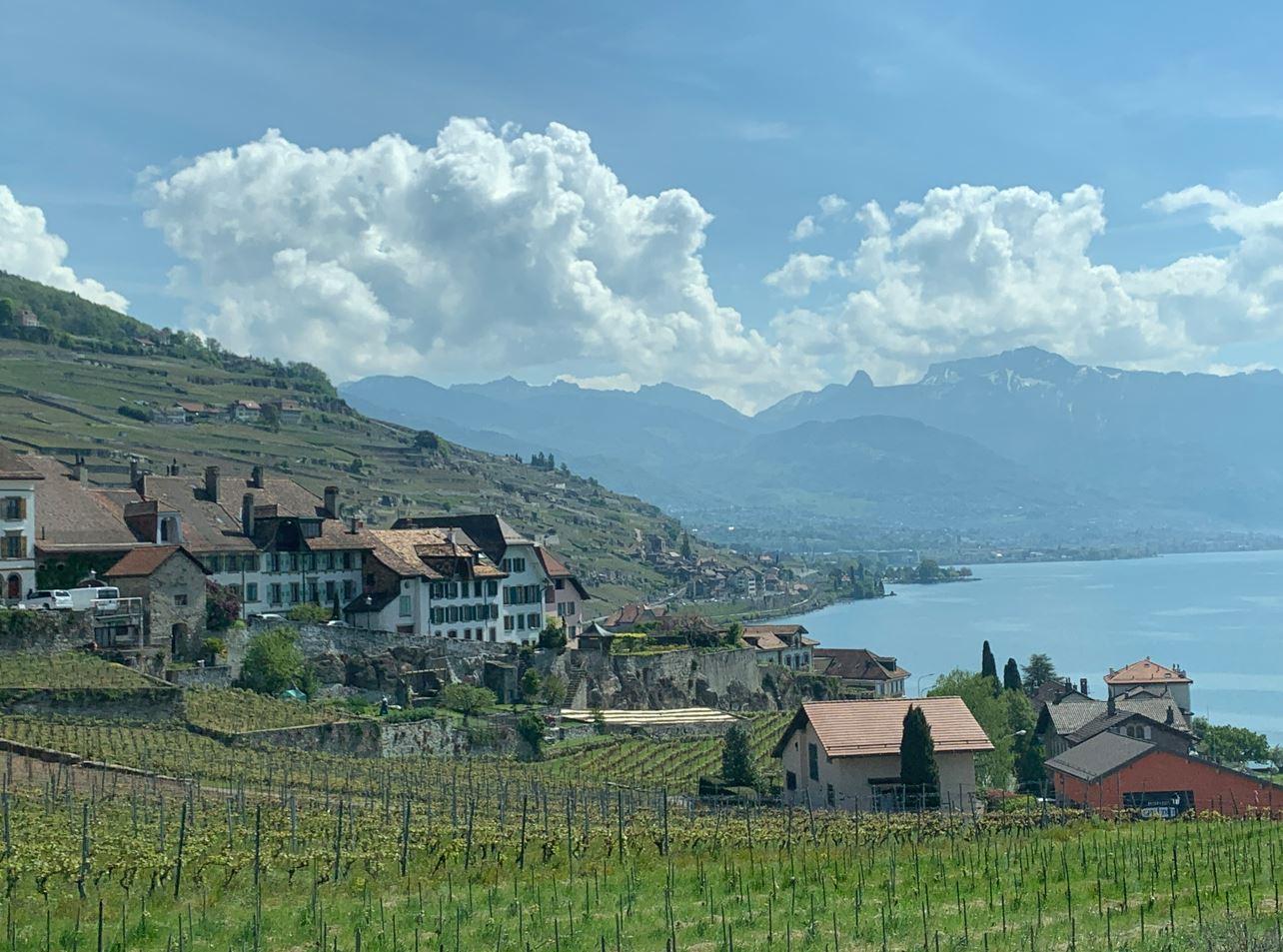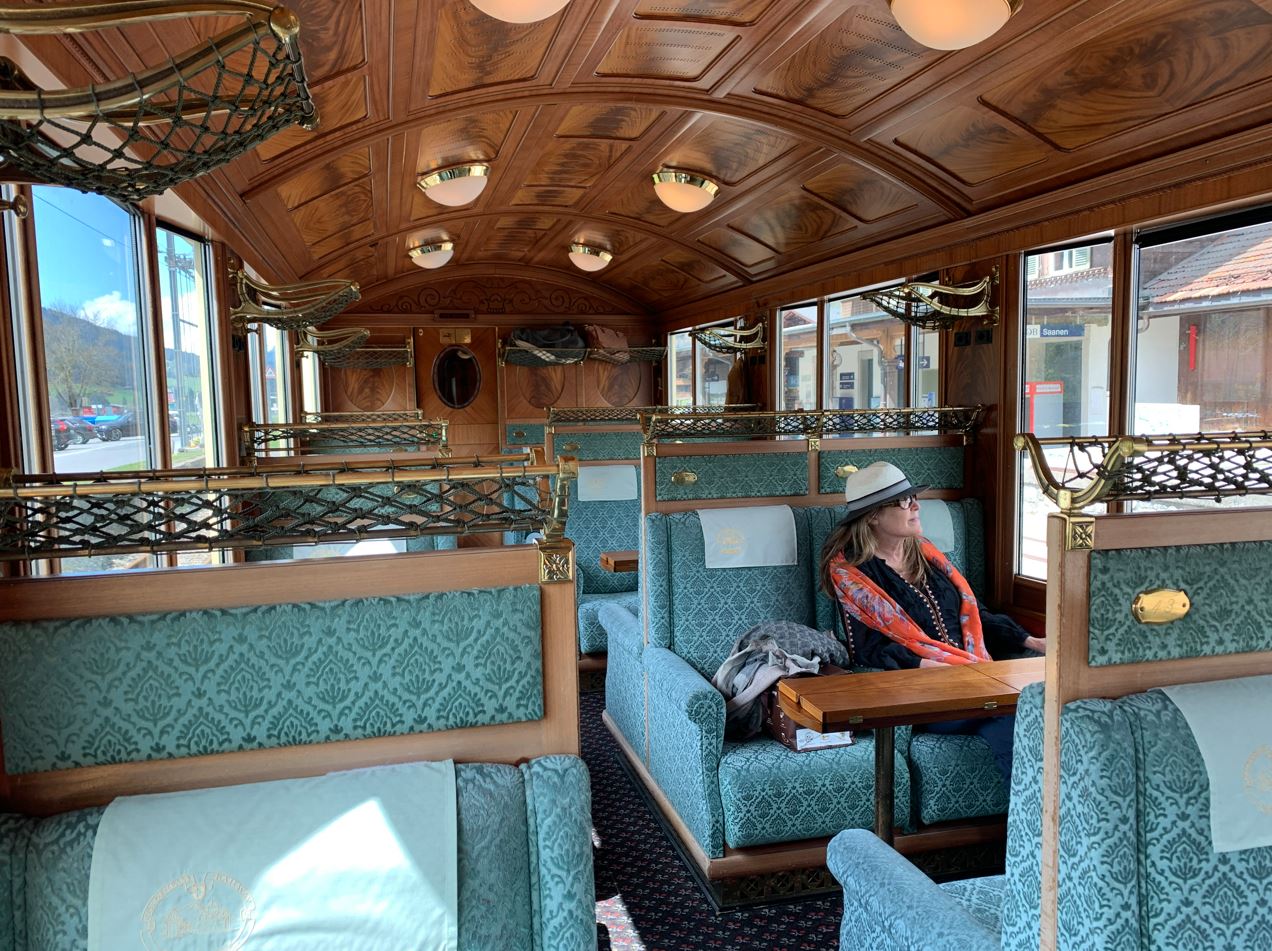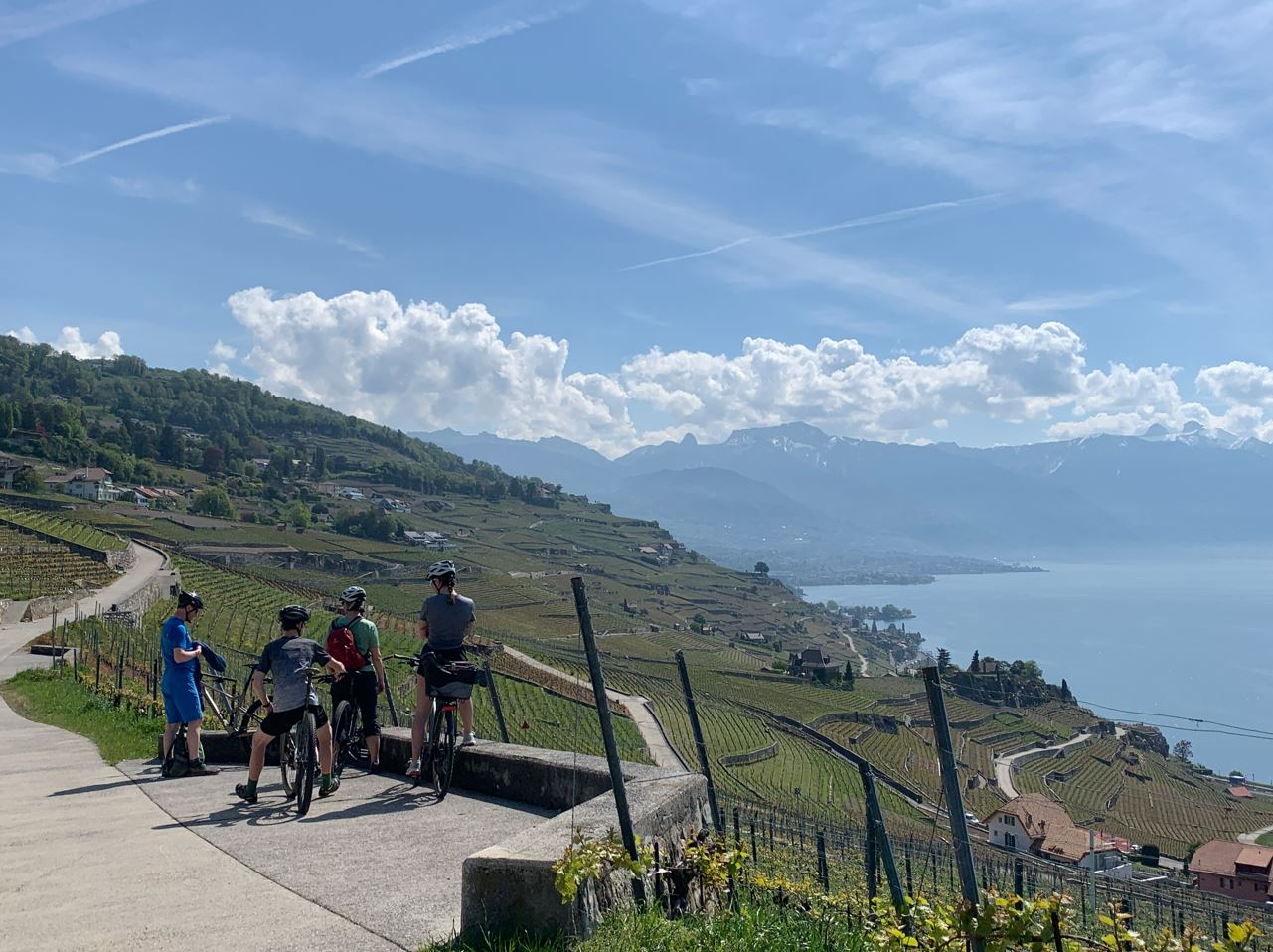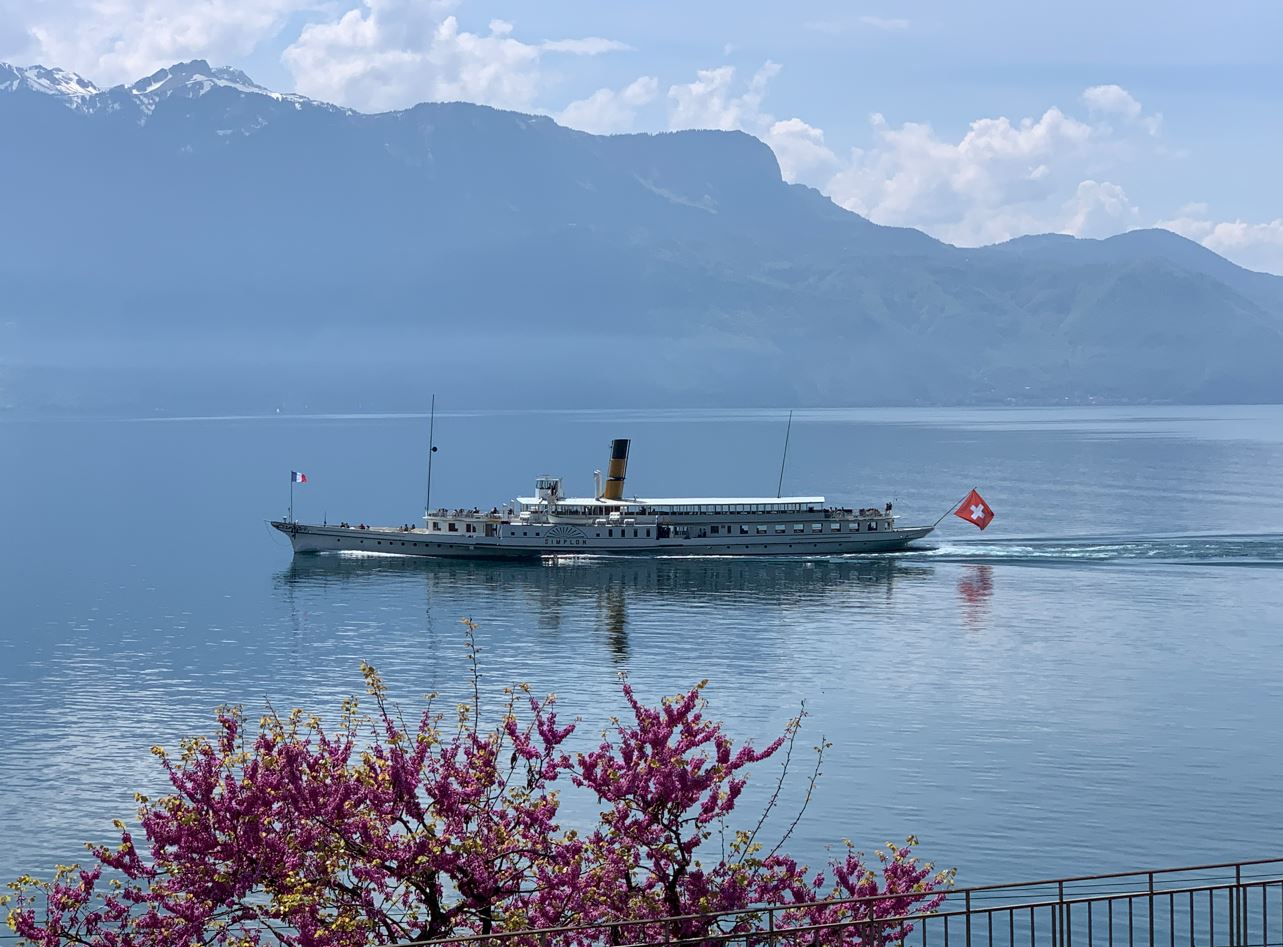
The train’s wheels squealed as each connecting coach curved in a serpentine motion. The steep four-mile descent from the Swiss Alps, zig zagged between the Rochers de Naye mountainside through terraced hills leading to Lac Léman. I had visited Switzerland before, but this was my first time to an area called Vaud, the less traveled side of Lake Geneva. Peering down to the views below, Chillon Castle appeared on the left, and another turn later, the resort town of Montreux emerged to the lower right. Center stage were the snowcapped Jura Mountains standing tall above the glistening lake with medieval towns dotting its shores. Easing back into my jade green cushioned seat, I ran my hand across the smooth velvet and rested against the white linen covered headrest. I felt myself being drawn into a nostalgic journey to a bygone era. A conductor slid open the wooden door and called out, “Tickets please” while he glanced at the brass plate that had my seat number inscribed – 43.

He noticed I was admiring the brass luggage racks, the ornate wooden paneling and ceiling in the Belle Époque carriage. “Have you ridden the Belle Epoque train before?” he asked. I replied, “No, it’s my first time.” He added “It really is like riding the great trains of the 1930’s. You timed it right. This train only runs the Montreux–Zweisimmen line twice a day.” The train made its final rounded turn as we pulled into Montreux, known for its world renown Jazz Festival. Our anticipation heightened, as my friend and I exited the train to scout out the French speaking Vaud Region, one of the 26 cantons in Switzerland. We had only a few days to see the towns of Montreux, Lausanne, and the villages on the north side of Lake Geneva, referred to as Lake Léman by the Vaudois.
From the train station, we meandered to the leafy promenade lining the lake with Belle Époque buildings and colorful tulips adorning the quay. The “Italie”, a 108-year-old paddlewheel steamer glided past by connecting towns around the lake. By foot we started to walk up the steep Rue du Marché to explore the historic alleyways and stairways of Old Montreux. Many winding trails sprout from Montreux including the Narcissus Trail, known as Les Pléiades, where the white daffodils are best viewed in springtime.
Following a brief tour of the Vielle Ville, we caught a bus heading northwest along the Swiss Riviera to Vevey, where we arrived at the elegant Grand Hotel du Lac. This late 1800’s hotel has been restored to a 5-star luxury property. Our terrace had a wrought iron balcony with panoramic lake views. After checking in, we set out to see the town. We did a double take when we saw a giant 24- foot fork sculpture, Fork of Vevey, standing on the water in front of the Alimentation Museum focused on the history and facets of food, nutrition, and Nestlé’s history. Continuing along the boardwalk, we came to the town square where the Marchés Folkloriques was in full swing. Swiss folk medleys rang through the air, artisans displayed their crafts, food stalls with local specialties like cabbage-stuffed sausages with potato and leek gratin and wine tastings were aplenty.
Following a day of seeing sights we retired for the night leaving our French doors open to the moonlit sky while the fresh crisp air lulled us to sleep. The next morning, we caught bus 212 for a short 2-mile ride uphill to Chaplin’s World. Visitors walk in the footsteps of Hollywood star Charlie Chaplin at his former country estate and landscaped gardens with views of the lake. It’s a museum full of memorabilia and Hollywood sets. Not far from here is Lavaux, a UNESCO protected area and the largest contiguous vineyard region in Switzerland. The ascent to the top of the trail is a dizzying 1,500 ft. Cars and cyclists whizzed past us down the winding country roads to the lake. That’s when I wished I had worn hiking shoes and downloaded a map of the Terrasses de Lavaux trail.

We got lost in the vineyards and burned off some calories from the Tomme Vaudoise local creamy cheese and dark chocolate bites we savored the night before. After many uphill and downhill unexpected detours, we finally made our way back to the hotel. The next day, our Vaud Tourism Guide Annette picked us up in her car and drove through the villages high above where we could look down to the patchwork of vineyards below. After we told her about getting lost the day before, she smiled and said “That’s not a surprise! Vaud is made for hikers and cyclists. But it’s good to know where you’re going. There are 250 miles of 6 ft stonewalls that curve through 14 wine-producing villages. These walls protect 2,000 acres of vineyards with ten thousand terraces spread over forty levels. Just think, these vines have been cultivated by generations of winegrowers dating back to the 11th century!”
After a stop at Lavaux Vinorama, where 300 local wines are represented for visitors to taste and buy, we went for lunch at the waterfront Café du Raisin, a traditional Vaudois bistro located in the ancient village of Saint-Saphorin. Locals were seated around us on a sunny terrace, where everyone enjoyed plates of fried chanterelles, Meunière perch fillets while sipping on glasses of aromatic white wine Chasselas, the predominant grape in Lavaux. Following lunch, Annette guided us through the narrow alleyways of the town to see the 16th century winegrowers’ houses.

Our last two days were spent in Lausanne and a stay at the majestic Beau Rivage Palace. This Belle Époque luxury hotel situated within ten acres of private gardens and along the shores of the lake has welcomed stars like Mary Pickford and Gary Cooper, and travelers from afar. The walls in the hallways are hung with historical photographs and mementos of a golden age. Coco Chanel spent the last days of her life in this city and her beloved dog is buried at the hotel’s pet cemetery Cimetière du Bois-de-Vaux.
Other highlights in the capital city of Lausanne, include the historic old town and its Gothic cathedral, the art collection at the Foundation de l’Hermitage and Plateforme 10, a modern structure that encompasses museums, foundations, shops, and cafes. The Olympic Headquarters and Museum takes visitors into the Olympics of the past showcasing a collection of torches, uniforms, champions photos, medals and more. After a few fleeting days off the beaten path, I boarded the sleek modern train heading to Geneva for my flight home. Looking over my shoulder, I took one more glance of Vaud, on the other side of the lake. A hidden treasure tucked away in the south of Switzerland.

Learn more about this area at Switzerland Tourism site and Swiss Travel Pass and Visit Global Adventuress to find more travel inspiration.



